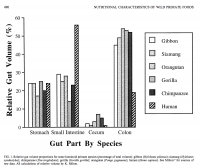Kartoffel
Member
- Joined
- Sep 29, 2017
- Messages
- 1,199
I don't see how the ratios found in the food we'd evolved eating would be anything less than optimal.
I don't like evolutionary arguments about ideal diets and foods. I think no one really knows what exactely we ate over millions of years, or what that means for our physiological needs today. Dozens of different groups are claiming that their diet is the one we evolved to eat. Fruitarians say we are made to eat fruits and leaves, paleos say we evolved eating meat and berries, others say we are meant to eat mostly starchy things like tubers. They all cite tiny bits of historical evidence, but in the end it's nothing more than anecdotes selected as circumstantial evidence.
I don't think that the frail, low-energy people of Okinawa are the optimal form of human evolution.

